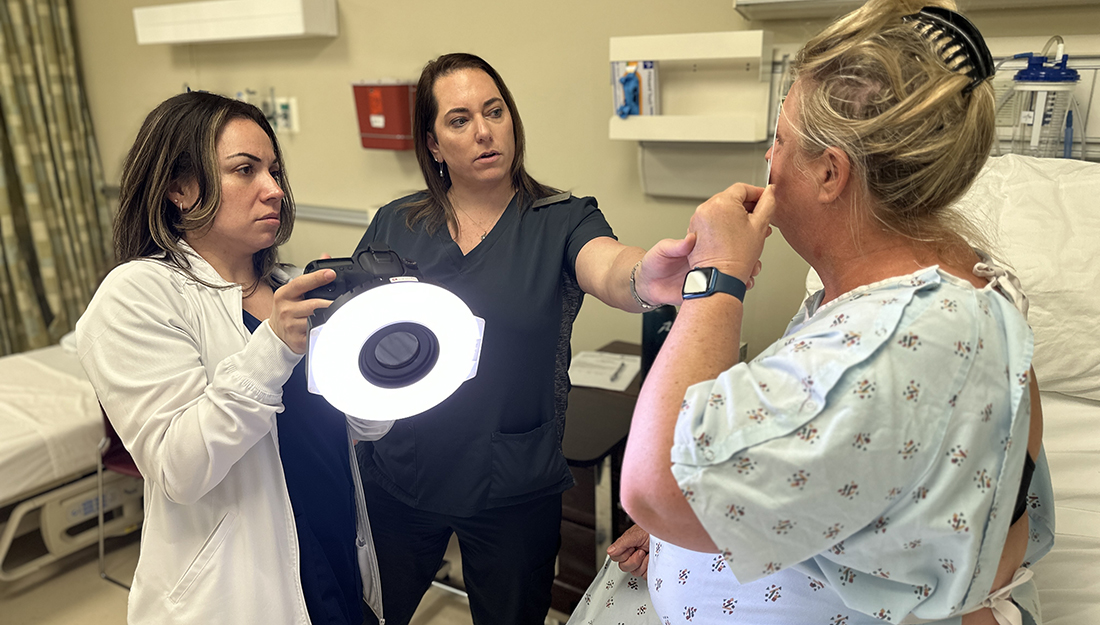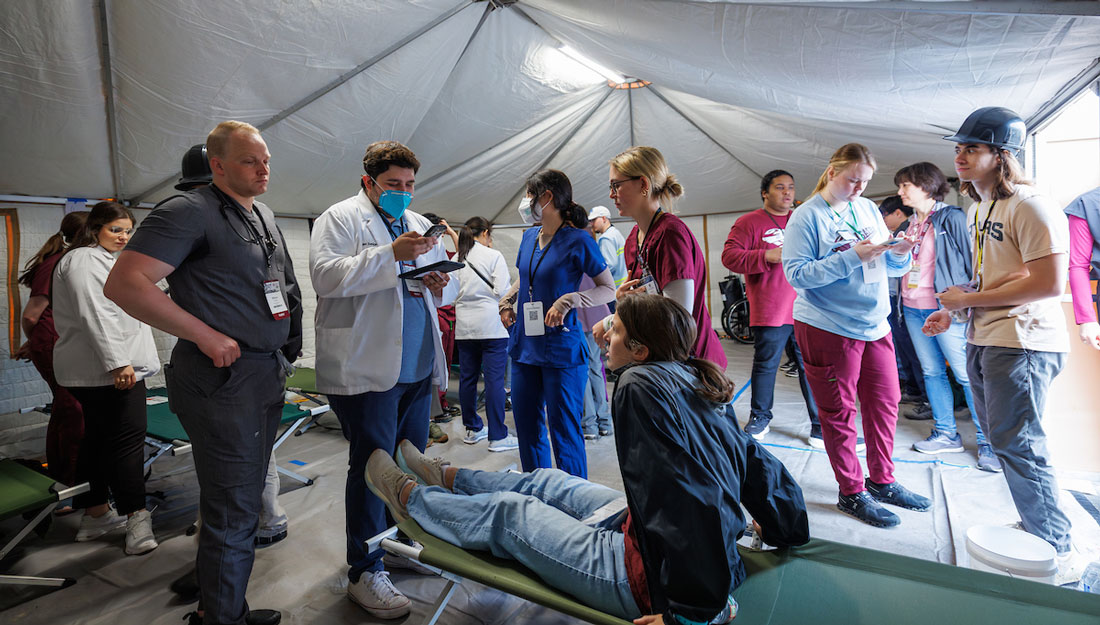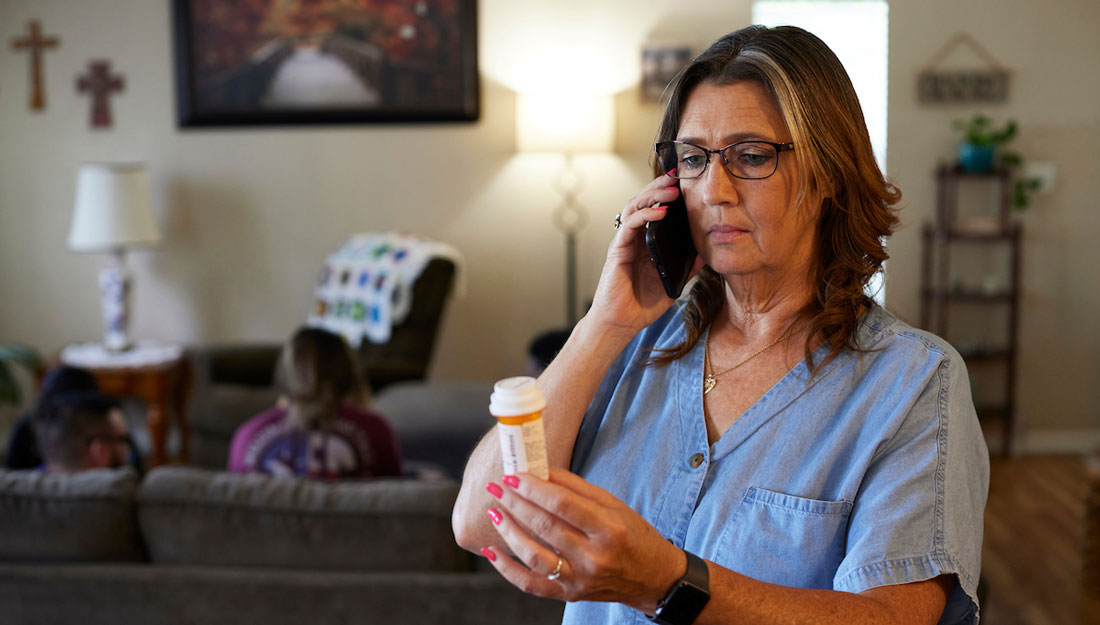Stepping away from the textbook: A team-based approach to medicine

A mother rushes into the emergency department (ED), panic stricken by her infant’s high fever. Nurses console her, gathering what information she is able to relay, triage the child and order necessary testing. Pending those results, the ED physician wastes no time prescribing the necessary medication to stabilize the infant, the dosage of which a pharmacist calculates quickly and with precision—knowing that every milligram is crucial and too much can have potentially fatal consequences.
At every point, these professionals have to be cognizant of what the others are doing. Communication between the nurses, physicians and pharmacists has to be clear and efficient, because every second matters and any mistake could have severe repercussions.
Just reading about this scene would likely cause any parent’s pulse to race, but the good news is that this particular case resulted in a positive outcome for everyone involved. Featuring pharmacy, nursing and medical students, the neonatal sepsis simulation mentioned above is just one of the carefully staged scenarios conducted in the Texas A&M Health Science Center’s Clinical Learning Resource Center, a 27,000-square-foot, realistic hospital setting equipped with the latest tools and technology to enhance learning. The idea behind such multi-disciplinary simulations is simple, but vital: incorporate a team medicine approach to learning so health professions students are amply prepared for the realities of today’s health care setting.
“Team medicine is a concept that everyone—nurses, physicians and pharmacists—must employ in this day and age. Each health professional brings all of their knowledge, their specific understanding and training to the table, for the care of the patient,” said Jim Donovan, M.D., vice dean at the Texas A&M College of Medicine in Round Rock.
As research continues to show that issues with communication have a direct correlation with medical errors, interprofessional education, which is the method behind the team medicine approach to learning, is evolving as a medical education trend across the nation.
“Interprofessional education brings more of the ‘real world experiences’ into students’ training. It allows them to learn more about different disciplines so that they can work together efficiently and appreciate one another’s skills,” said Mary Chavez, Pharm.D., interim vice dean and chair of pharmacy practice at Texas A&M Irma Lerma Rangel College of Pharmacy. “With this newfound perspective on the bigger picture of patient care, providers can leverage collaborative knowledge to enhance outcomes.”
Traditionally, health professions curricula were taught in a fairly siloed approach, where students learned the fundamentals of a specific discipline, but gained limited knowledge of other’s functions in a real-world health care setting. Collaborative learning is aimed at breaking down those barriers and providing students with an understanding of the different training each profession undergoes, while simultaneously teaching students how to communicate clearly with one another.
“Before the idea of interprofessional education emerged, the first time that nurses, pharmacists and physicians interacted with each other was in the field—and they had no previous experience to draw upon as they quickly tried to learn how best to work together,” said Jerry Livingston, Ph.D., assistant professor at the Texas A&M College of Nursing. Livingston helps coordinate Texas A&M Health Science Center’s annual Disaster Day, an event that brings together nursing, medical and pharmacy students in a simulated disaster.

Similar to staged simulation sessions in the Clinical Learning Resource Center, Disaster Day provides students with a realistic disaster that will broaden their scope of training. While extreme, the yearly event prepares students for a challenge they may encounter during their health careers, teaching them how to handle a high volume of patients and communicate effectively in a high-stakes environment.
Kept secret until the day of the event, the disaster scenario is almost exclusively selected and prepared for by students. While faculty members are present during the event, they take more of an observatory role, allowing students to evaluate and care for patients on their own.
“It allows students from different disciplines to become comfortable communicating with each other, because ultimately that is what they’ll have to do in their future careers,” Livingston stated. “If one student is concerned about the safety of a patient, they need to be able to communicate that concern in an effective manner to both the patient and the other health professionals who are onsite.”
While mock emergency simulations are obvious examples of interdisciplinary education, they are far from the only efforts to promote collaborative learning among disciplines. The Texas A&M College of Nursing offers a TeamSTEPPS elective, which stands for Team Strategies and Tools to Enhance Performance and Patient Safety. Developed by the military, TeamSTEPPS teaches students effective and efficient ways to remember common hospital procedures, such as transferring a patient, and tactics for effectively communicating with others.
There is no doubt that interprofessional education and team medicine will play a greater role in the future of health care. “Interprofessional training is a trend of the future that needs to happen,” Chavez stated. “Many institutions are recognizing the importance and benefit of training students of various professions together from early on and there has been a greater push for including more collaborative learning opportunities in curricula. In fact, many licensing boards are now encouraging schools to implement interprofessional education.”
Some lessons simply can’t be taught in the textbooks, like how to work together to improve patient outcomes. Future Aggie health care professionals are being taught the collaborative real-world skills they need to excel before entering the workforce. “Frankly, medicine has always been a team sport,” said Donovan. “And the most effective physicians, nurses and pharmacists have always recognized the importance of working together. If they can’t practice as a team during education, how can we expect them to do that on real-world playing fields—hospitals and clinics around the nation?”
Media contact: media@tamu.edu


